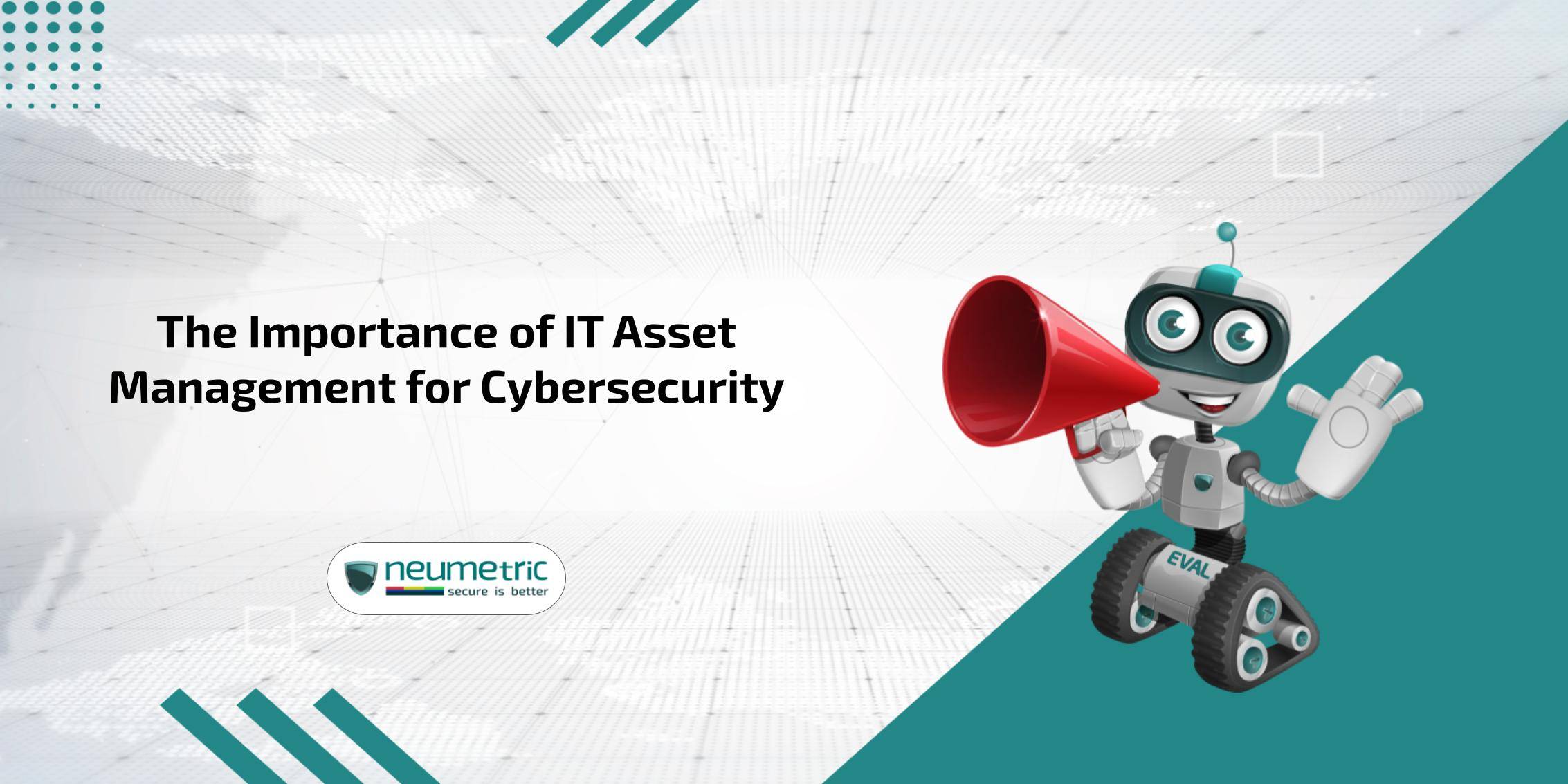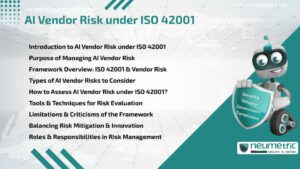Table of Contents
ToggleThe Importance of IT Asset Management for Cybersecurity
IT Asset Management [ITAM] is a critical component of an organization’s cybersecurity strategy. With the increasing sophistication of cyber threats, having visibility & control over hardware & software assets allows security teams to reduce their attack surface & respond quicker to incidents.
What is IT Asset Management?
IT Asset Management is the process of tracking & managing all technology equipment, licenses, warranties, contracts, software & components across an organization’s entire infrastructure. IT Asset Management includes both physical assets like servers, laptops & mobile devices, as well as virtual assets like software licenses, cloud storage, databases & more.
The core components of an effective IT Asset Management [ITAM] program are:
- Discovery: Using automated tools to scan networks & systems to identify connected devices & installed software. This provides a baseline view of the IT environment.
- Inventory: Maintaining a centralized list of all assets with details like hardware specs, software versions, license keys, support contracts, locations, owners etc.
- Lifecycle Tracking: Monitoring assets over time & log changes like software updates, location changes, warranty expirations etc.
- Utilization Monitoring: Understanding how assets are being used to optimize licensing costs & refresh cycles.
- Reporting & Analytics: Generating reports for financial planning, contractual oversight, vulnerability management & more.
Why is IT Asset Management Important for Security?
IT Asset Management [ITAM] provides immense value for cybersecurity activities in these key areas:
Understanding the IT Attack Surface:
The attack surface represents all points where an unauthorized user could gain access to an environment. Not having an accurate inventory of assets means that security teams are defending an invisible landscape. They don’t know how many devices they need to protect, what software might have vulnerabilities, where sensitive data resides etc.
With IT Asset Management [ITAM] providing this single source of truth, Chief Information Security Officers [CISOs] can truly understand their risk exposure & build appropriate defenses.
Identifying Security Incidents Faster
When a cyberattack does occur, every second counts in limiting damage. IT Asset Management [ITAM] databases allow security analysts to quickly check whether an indicator of compromise is from an authorized device or rogue entry point.
For example, if unfamiliar IP addresses show up in network traffic logs, the IT Asset Management [ITAM] data can clarify if they originate from a stolen device quickly. Without this context, precious time is wasted chasing false positives.
Improving Vulnerability Management
The more devices & software running in an environment, the more potential vulnerabilities that could be exploited. ITAM provides an automatic way to keep vulnerability scanners up-to-date reflecting your organization’s actual state.
You can instantly check whether any publicly disclosed vulnerabilities apply to your specific versions of hardware & software. This allows prioritization of patching activities to mitigate the highest risks first.
Enforcing Secure Configurations
Once new devices are deployed, IT Asset Management [ITAM] tools also facilitate push-button enforcement of standard hardened configurations such as enforcing full-disk encryption on laptops, restricting USB drives, disabling obsolete protocols etc.
This reduces reliance on error-prone manual processes for system hardening. All assets stay compliant with security baselines through their lifecycle.
Managing Access & Authentication
As employees join or leave an organization, their access needs to be granted or revoked across all systems appropriately. IT Asset Management [ITAM] serves as the system of record for onboarding/offboarding automation.
With visibility into the inventory of assets & their owners, Identity & Access Management [IAM] solutions can sync relevant permissions based on HR system changes.
Supporting Disaster Recovery
Whether due to ransomware, natural disasters or server outages, being able to rapidly rebuild systems is key to resilience. ITAM provides an automatically documented blueprint of the technology stack & layout to accelerate restores.
Optimizing Software Licenses
For many enterprise organizations, software licenses represent one of the largest IT expenses. Without ITAM, unused licenses go unseen which leads to overbuying more than necessary.
Having a single view of license utilization across business units allows consolidation to reduce costs. ITAM data also feeds software asset management [SAM] tools for ongoing license optimization.
ITAM underpins many crucial cybersecurity & technology management functions within an organization. Prioritizing investment in maturing ITAM capabilities pays dividends across many areas.
Best Practices for Leveraging ITAM
Now that we’ve discussed why IT Asset Management is so valuable for security teams, what are some best practices to leverage it effectively?
Establish a CMDB as the Central Repository
A Configuration Management Database [CMDB] serves as the foundation for aggregating disparate ITAM data sources into one version of truth. Leading options include ServiceNow CMDB, BMC Atrium, Ivanti Service Manager & Freshservice CMDB.
CMDBs integrate with other key systems like public cloud inventories, HR databases, procurement records etc. While specialized ITAM tools have rich functionality, ultimately the CMDB is the core reference data store that powers use cases.
Enable Automated Asset Discovery
Manually tracking assets like on spreadsheets inevitably grows inaccurate over time as the infrastructure changes. Automated discovery solutions provide continuous visibility as the authorized environment evolves.
Popular agentless options that can scan networks without installing software include ServiceNow Discovery, BMC Discovery, Ivanti Neurons Hypervisor & Flexera One Discovery. Discovery may identify rogue or shadow IT devices unknown to security teams. These systems lie outside standard protections so pose a major risk.
Maintain Accurate Assignment Data
Knowing the business owner & physical location of each asset provides essential context for both ITAM & cybersecurity teams. Assignment data like department, cost center, data classifications, building area etc. should stay updated even if devices move offices or transfer between employees.
Monitor Critical Asset Activity
While it’s important to inventory all technology items, clearly identify the most critical assets containing regulated data or supporting vital operations.
For these extra controls may be warranted like Privileged Access Management [PAM], extended logging, micro-segmentation etc. Special alerts should notify if these assets change network locations, owners or security profiles.
Perform Regular ITAM Audits
There tend to be gaps between actual infrastructure deployments vs what’s tracked in CMDBs. Regular self-audits identifying inconsistencies allow cleanup to maximize accuracy.
Common audit approaches include matching SNMP network scans vs CMDB listings, spot checking sample assets in person or comparing CMDB data vs external providers like cloud console inventories.
Integrate With the Vulnerability Management Program
Feeding an accurate ITAM-sourced asset inventory into your vulnerability scanners improves the detection of misconfigurations & missing patches. This prevents wasted time chasing false positives & prioritizes risks.
Integrations with tools like Nessus, Qualys & Rapid7 InsightVM are essential to maximize coverage of the attack surface within schedules.
ITAM for Cloud Environments
Cloud & hybrid infrastructure pose new ITAM challenges with remote assets that may not be fully controlled or visible. Here are tips to enable asset management for the cloud.
Centralize Identity From Cloud Providers
In cloud environments, robust identity & access controls are even more critical since physical security is absent. Centralizing authentication via Single Sign-On [SSO] to the cloud console prevents diluted permissions.
Map Dependencies Between Assets
Unlike on-prem servers, cloud-based assets like functions, storage buckets & databases contain hidden interdependencies that are critical to map. A change to one asset may cripple others so CMDB relationships help identify impacts.
Control Custom Image Sprawl
Allowing uncontrolled custom virtual machine images results in images with inconsistent security controls. Retaining only sterile gold builds aligned to policies prevents drift.
Right-size Authorization Footprint
Since cloud resource sprawl introduces risks, zero trust principles should govern granting least privilege access to assets. Integrating cloud inventories into identity systems enables automation.
Embrace Tagging Strategies
Tags classify cloud resources with metadata for flexible management. Tags indicating compliance status, business criticality, data types etc. allows smarter controls & monitoring.
Conclusion
IT Asset Management pervades modern cybersecurity strategies as a fundamental capability underpinning greater resilience. With advanced persistent threats constantly probing environments for weakness, the adage “you can’t protect what you can’t see” rings truer than ever.
Constructing an accurate inventory through discovery, dependency mapping, owner assignments & lifecycle tracking brings this visibility to life. Both security & IT teams gain the insight needed to harden infrastructure, hunt threats faster & strengthen recoverability.
However, ITAM is not simply a one-and-done project. Maintaining evergreen accuracy as assets cycle requires ongoing scans, relationship tuning & self-audits. Integration with vulnerability management & access governance flows maximizes risk reduction too.
The journey also extends to public cloud & hybrid environments requiring innovations like centralized identity, interdependency diagrams & aggressive tagging policies. Ultimately though, no organization can reach its security objectives without maturing IT Asset Management capabilities in parallel. The cyberthreat landscape grows more dangerous by the day. The time for action ensuring visibility over the true attack surface is now.
Key Takeaways
- IT Asset Management provides complete visibility over hardware & software critical for reducing cyber risk.
- Key use cases enabled including understanding the true attack surface, detecting incidents faster & managing vulnerabilities at scale.
- Best practices like implementing a CMDB, discovery & standardized tagging improve ITAM & security outcomes.
- Special considerations for cloud environments include identity management, mapped interdependencies & controlled images.
IT Asset Management is maturing from an obscure back-office function to a cybersecurity powerhouse. With technology pervading business segments, understanding the asset landscape, access controls & vulnerabilities could mean life or death for companies in the future.
Prioritizing automation, integrations & self-audit practices pays dividends in risk reduction & optimized technology spending over time. Strategic ITAM ultimately enables security leaders to focus on more advanced protections rather than basic asset tracking duties.
Frequently Asked Questions
Is ITAM only relevant for large enterprises or can small companies benefit too?
ITAM delivers value at any scale. Even just basic spreadsheets tracking critical assets can aid the security posture & technology resilience of SMBs. Entry-level tools are inexpensive for growing organizations to adopt ITAM practices early.
Should ITAM data stay only within IT support or be shared more widely?
While IT teams compile & maintain asset data, the visibility helps other groups like infosec, facilities, procurement & finance. Read-only access to ITAM records via federated CMDBs prevents external teams disrupting primary systems while benefiting them.
What budget & headcount is typically needed to operate IT Asset Management?
Depending on organization size, two (2) to eight (8) dedicated ITAM roles are common such as a manager, admins entering data, auditors & tool specialists. Many also leverage interns. Tooling & operating costs generally range from $50,000 USD to $500,000+ USD annually.
How often should ITAM scanning & audits be performed for accuracy?
Quarterly discovery scans find asset changes. Separate spot check audits validating CMDB accuracy against other sources should run two (2) to four (4) times annually. Daily automated alerts for high-priority CI changes is best practice.
Where are common areas ITAM data falls out of sync requiring audits?
Typical problem areas include cloud assets not tracked centrally, devices left orphaned after employees exit, licensing utilization inaccuracies, location changes or reassigned cost centers. Even rigorous ITAM programs require ongoing tuning.





